Jaksally development organisation, a leading national NGO based in the Savannah region and working in 12 regions of Ghana, responded to the call of the decentralised witch camp in the central Gonja district of the Savannah region in 2022 to support the community members’ work on a self-reliance process using the Village Savings and loans Association (VSLA methodology.
Yesterday, 4th August 2025, a new group that merged from the first group made history in the decommissioned witched camp. This group started last month and started saving on the 14th of July 2025. Their first loan day was yesterday, and the group raised five thousand two hundred and twenty-two Ghana cedis ( 5,224GHS), about four hundred and ninety-seven US dollars. (497.33).
The group is made up of 31 members with a minimum share value of 4ghs cedis (0.3US$ to 40 GHs per share (3.81US$). They save regularly and weekly meeting every Monday at 2 PM.
How the methodology works
The basic principle of the Village Savings and Loan (VSL) system is that members of a self-selected group voluntarily form a VSLA and save money through purchasing shares. The savings are invested in a loan fund from which members can borrow, repaying with a service charge added. VSLAs are a form of accumulating savings and credit association (ASCA), a generic term that describes this type of small-scale community-managed financial institution.
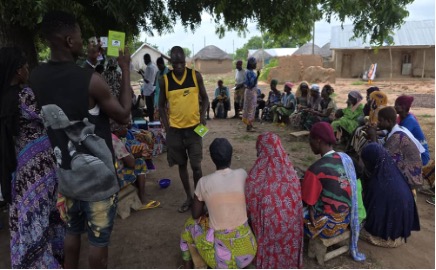
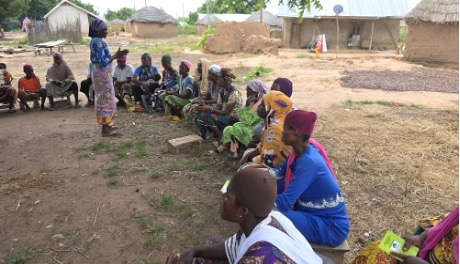
Cluster group and group sensitization training at Bonyagase
The primary purpose of a VSLA is to provide simple savings and loan facilities in a community that does not have access to formal financial services. Loans can also provide a form of self-insurance to members, supplemented by a social fund that provides small but important grants to members in distress.
Associations are autonomous and self-managing. All transactions are carried out at meetings in front of all the members of the Association, to ensure transparency and accountability. The cycle of savings and lending is time-bound. A first cycle must not last for more than one year before share-out.
All members have an individual passbook. This is necessary to permit varying rates of savings and to track member loan liabilities, but there is no Association record-keeping ledger. Only the starting and closing balances of the Association’s social fund and the loan fund are recorded, mainly through memorisation, at each meeting. VSLAs are made up of 25- 35 members. This strikes a balance between being big enough to create a useful pool of capital and small enough to keep meetings manageable. The members are self-selected, usually from amongst the adult population. Membership is open both to women and to men, but at least three of the five Committee members elected are normally female in the case of mixed Associations. Members who hold public office should not be eligible for Committee positions.
Associations meet at regular intervals, such as weekly, fortnightly, or every four weeks, during the first cycle, as agreed upon by the members.
Associations are comprised of a General Assembly and a Management Committee. The General Assembly elects members of the Management Committee. Each member of the General Assembly has one vote. The Management Committee consists of five people: a Chairperson, Record-keeper, Box-keeper, and two Money-counters. The Management Committee must be re-elected at the start of each cycle.
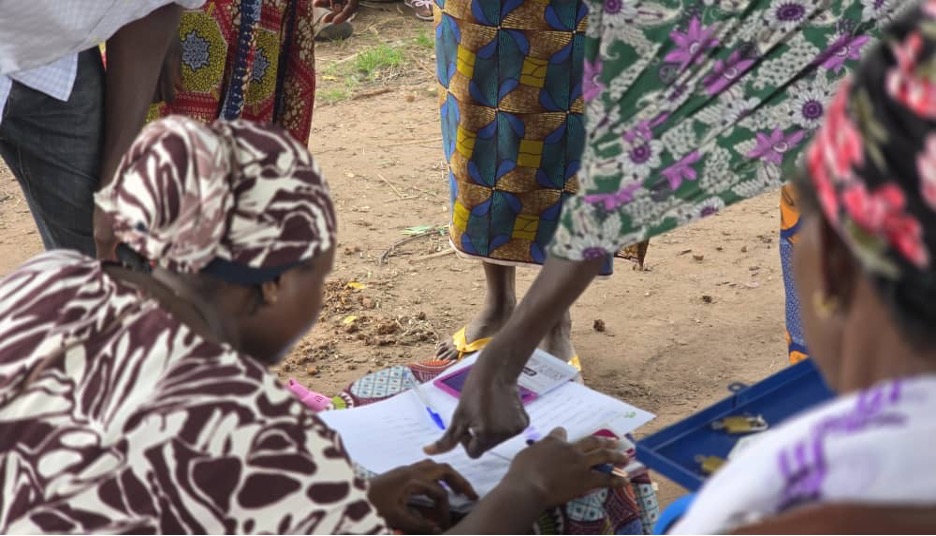
Each Association develops a written constitution that is signed by every member. A Constitution performs two functions: first, to provide a framework for governance, dispute resolution, and disciplinary action, and secondly, to specify the conditions for share-purchase/savings, access to benefits payable from the social fund. Each member of the General Assembly may be assigned one or more rules to remember, on which they are likely to be questioned at meetings. This has the effect that after some months, everyone knows the regulations by heart.
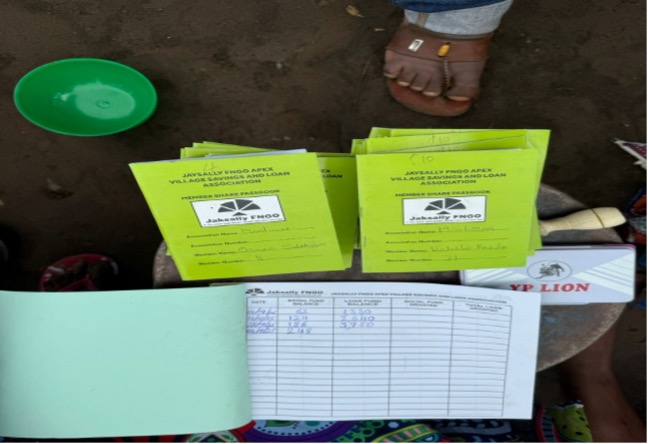
VSLA member passbook with share values and a copy of the record book
Associations agree on the length of the operating cycle, and this is recorded in the constitution. A cycle can run for a minimum of nine months after the first mandatory cycle, and now longer than one a year. All members of the Association save through share purchase. This is the core activity of the VSLA, and regularity in saving is the key to confidence and success. Between 1 – 5 varied shares can be purchased at each meeting.
The value of a share is set by the Association members individually at the beginning of the cycle. It is set at a level that allows the poorest members to reliably and regularly buy at least one share per meeting. However, it should not be set so low that five shares will not satisfy the savings objectives of the majority. At the start of a new cycle, and with the agreement of all members of the Association, the value of a share can be increased or decreased.
Loans are made every four weeks. All members of the Association have the same right to borrow from the loan fund, which is comprised of the members’ share purchase money, loan service charges, and fines. The Association sets the length of the loan repayment term, which should never be more than six months and, during the first cycle, no longer than 12 weeks. The size of a loan available to a member may not be more than three times the total value of all the shares they have bought. This ensures a fair distribution of capital and prevents the risk that any one member will be overwhelmed by too much credit.
The Association decides the percentage rate of the service charge for loans and notes it in the constitution. Service charges on loans are due at four-week intervals. The service charge is applied to the principal of the loan every four weeks until fully repaid. It must be paid when due, regardless of whether the member repays the loan principal.
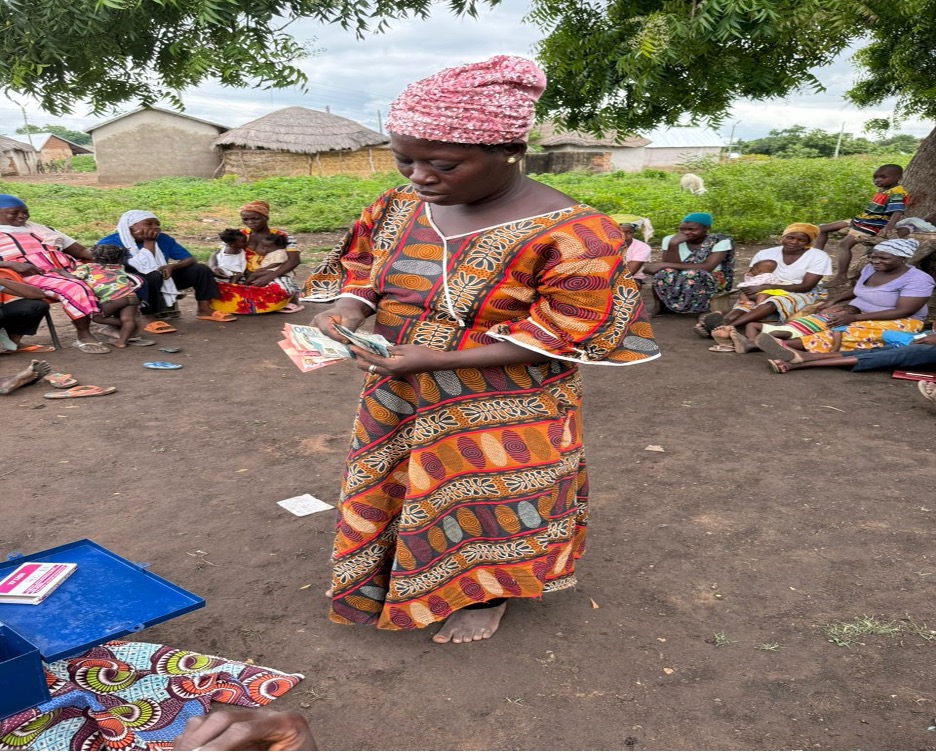
A member is counting her loan on the first loan taken day. The member has a share value of 40GHS and has saved 800GHS. She got gor ther first loan 3 times her savings, which was 2400GHS. She is counting that before she signs the loan in her member’s passbook.
The Association does not fine borrowers for late loan repayment. This aggravates any underlying economic crisis the household may be facing. The embarrassment of being late is a sufficient penalty.
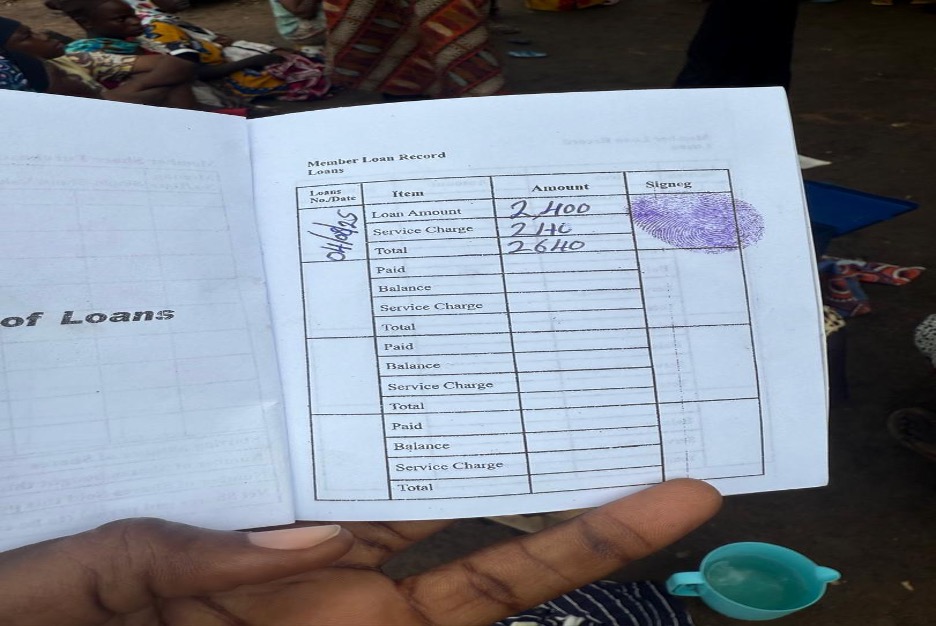
Associations may wish to create a social fund. Associations agree on a regular, equal contribution by all the members to this fund. This provides small grants for specific purposes such as emergency assistance, funeral expenses, and educational costs for orphans. The fund is not intended to grow but is set at a level that covers the minimum insurance needs of the Association’s members. Anyone needing a grant from the social fund makes the request publicly to the General Assembly. Approval rests with the General Assembly and may be immediately disbursed. The social fund is kept separate from the loan fund and is not included at the end of the end-of-cycle share-out.
When the operating cycle comes to an end, the Association shares out the total value of its financial assets amongst the members (except for the social fund). As the end of the cycle approaches, no new loans are issued, and all outstanding loans are repaid. This is mingled with any money remaining on hand and is shared out amongst the members in proportion to the number of each person’s shares. After the share-out, members who do not want to stay in the Association may leave and new members may be invited to join.
At the end of the share-out meeting, members who plan to continue to the next cycle may consider making a lump-sum starting contribution to the loan fund to initiate lending activities with a useful amount of money on hand. If they decide to do this, all members should agree to contribute the same amount at the first meeting of the next cycle, which should take place immediately. The amount of the contribution on this one occasion is not limited to the normal five-share ceiling. Once the start-up shares are stamped into all passbooks, deposit shares will be bought as normal, subject to the normal five-share ceiling.
When a new cycle begins, members can agree to change the value of the standard share. The price of a share cannot be changed during the cycle.
